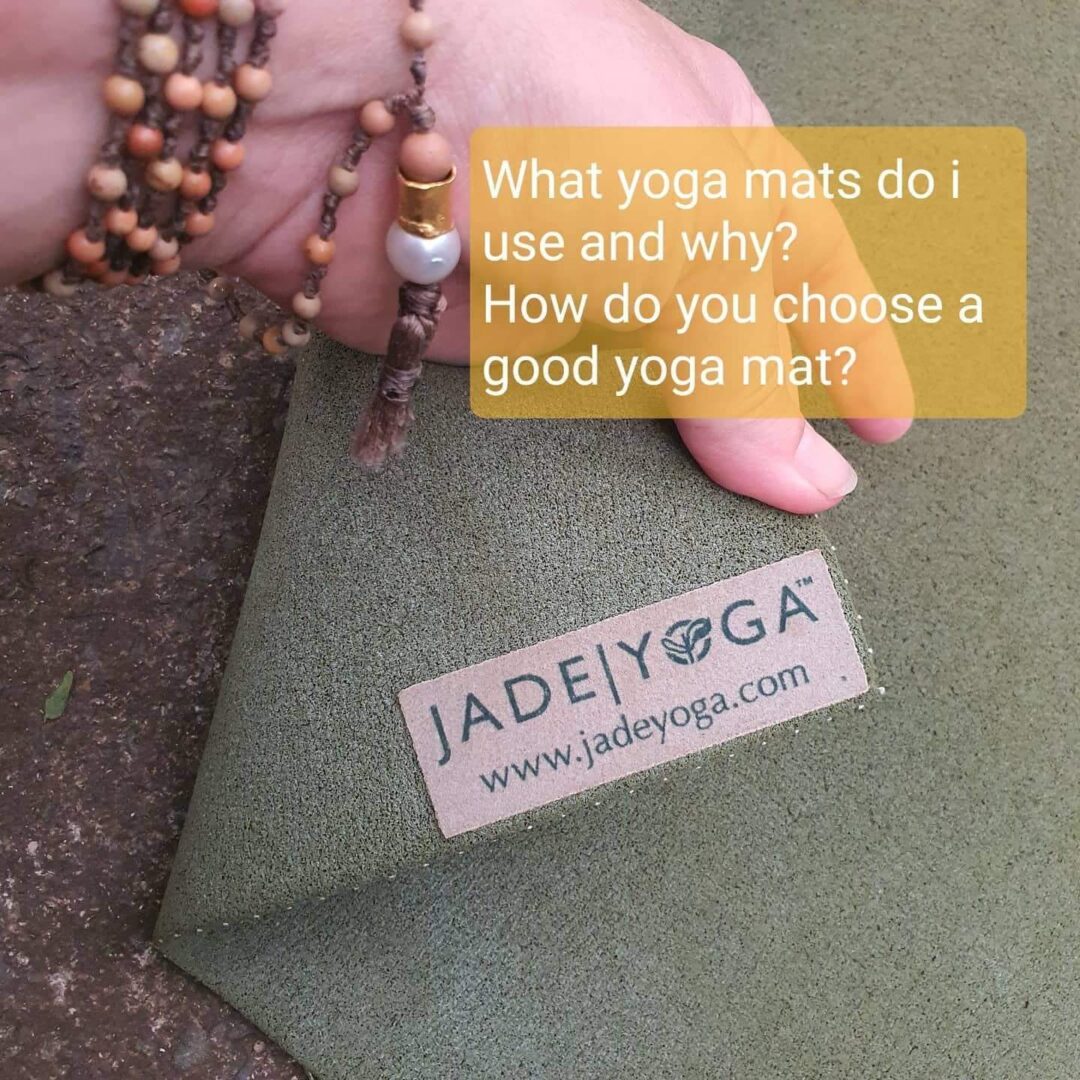So it is time to buy a new yoga mat, but which is the best one? Perhaps you are a seasoned practitioner and want to see what is new and recommended in the field, or perhaps you are new to Yoga and would like some advice on where to start. There are many things to consider.
-
- What is the best thickness for a yoga mat?
- Is there a difference between a yoga mat and an exercise mat?
- What is the best mat to buy?
- What is a good yoga mat?
- What is the best material for a yoga mat?
- What Yoga mat is environmentally friendly?
- What Yoga mat is better for my body?
- What Yoga mat is better for my practice.
- How to keep yoga mats clean?
- Bonus: Use Lisa’s tool in deciding on a decent yoga mat.
Yoga mats have certainly changed over the years. Interestingly there are records of early practitioners who used to practice on animal skins. Of course the basic function of having a yoga mat is to make your practice just that little more comfortable, however of course you don’t actually need one. I have certainly had many beautiful practices without my mat when feeling the earth has enhanced my practice such as practicing yoga on a sandy beach, or on the side of a mountain where the scenery contributes to the feeling of connection with the environment and had compelled me to practice some yoga. In saying that I always have a yoga mat in the places I call home or when I travelling. I take my yoga mat with me (albeit a small travel style yoga mat) in every place I stay. It is a part of my daily practice.
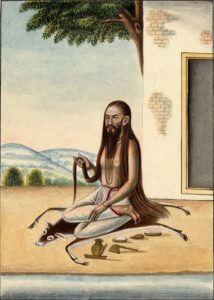
Source: Company School
Bharadwaja, a Rishi who Rāma, Sita and Laksmana spent time with during their exile. Bharadwaja is shown seated on the ground in front of a building. A tree is shown behind the building and hills and foliage are shown in the far distance. Bharadwaja is seated on an antelope skin and on the ground around him are implements needed during his meditations. He is seated with his right leg folded over his left and his hair is loose down to the ground. He wears a white dhoti and is bare-chested except for a string of beads around his neck. He rests his left hand on his lap and holds his hair with his right hand. He has a full beard and moustache. The painting is surrounded by a black border. Source: Wikipedia
So many examples of when NOT using a yoga mat has been perfect (don’t let not having a yoga mat put you off from practicing).
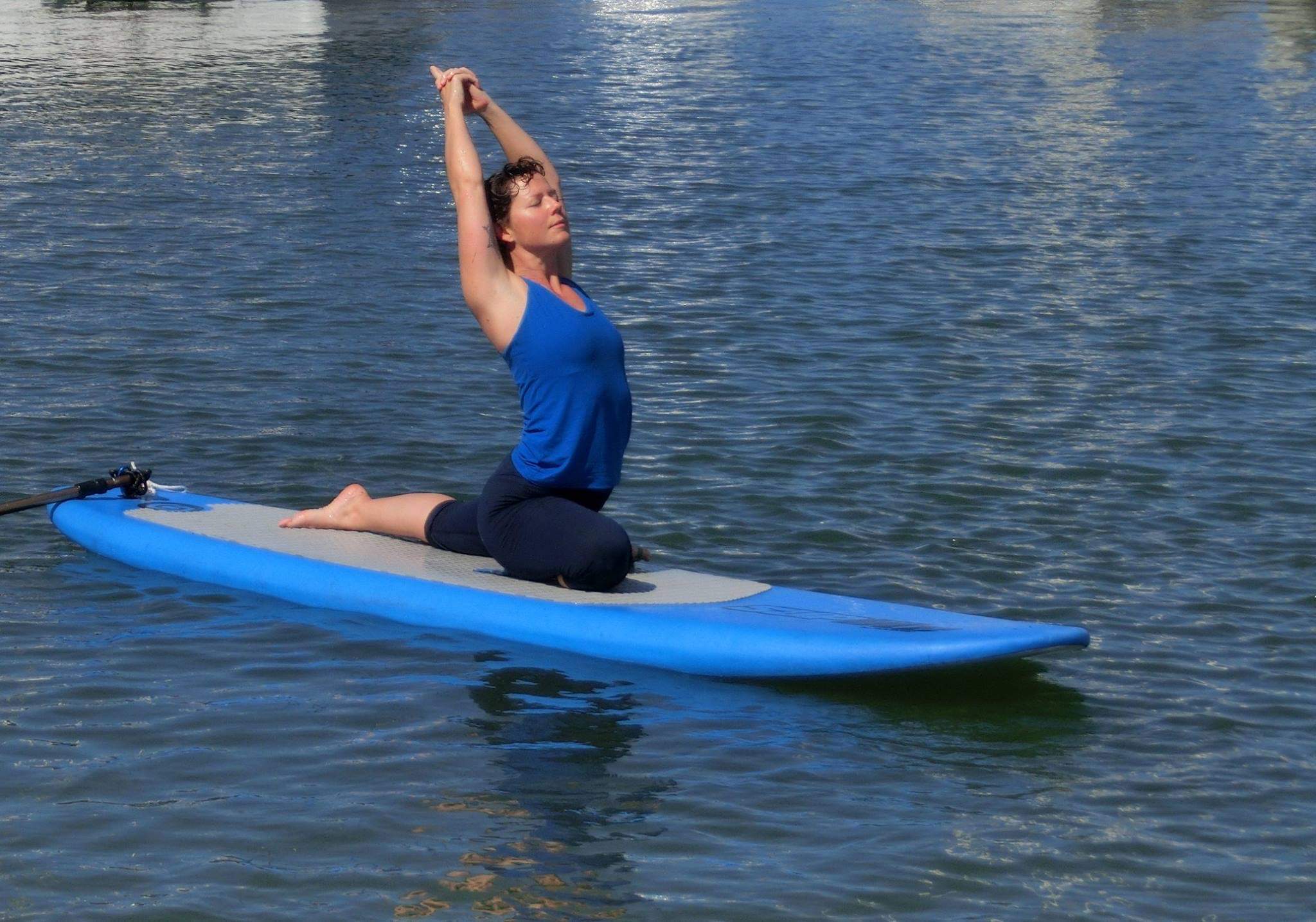
Lisa in Pigeon Pose on a SUP board.
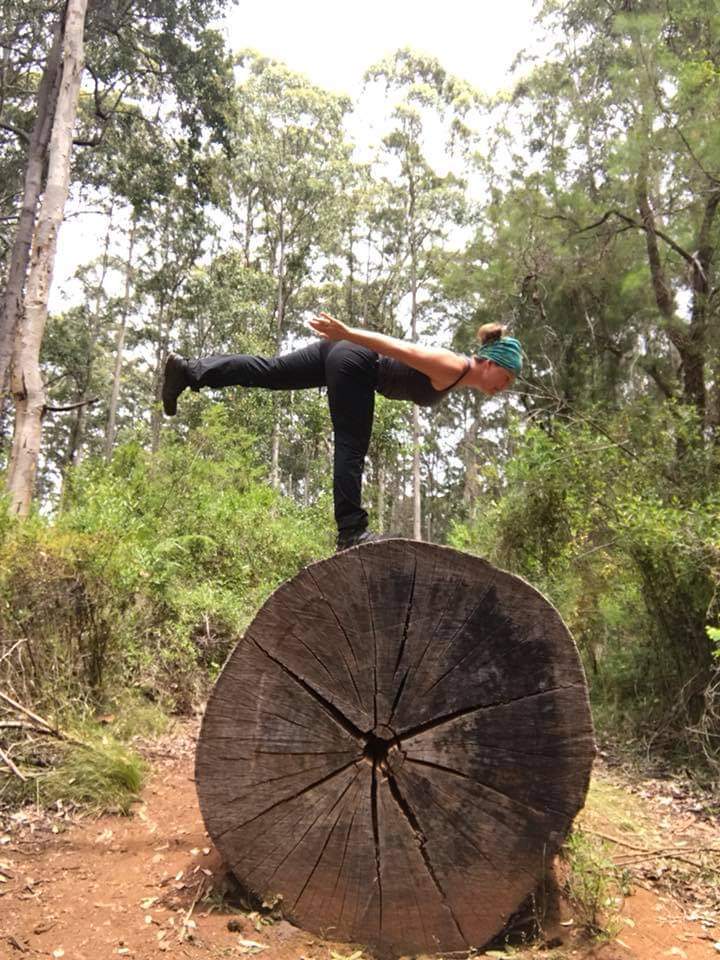
Lisa in Warrior3 Pose whilst hiking in Western Australia.
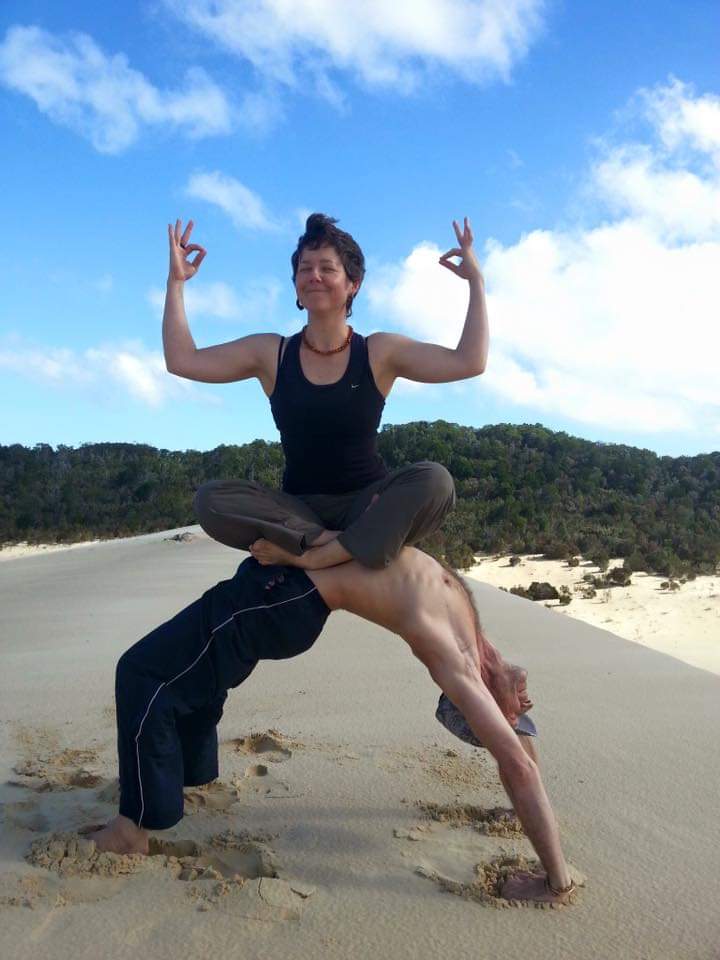
Yuri and Lisa during practicing some Partner Yoga on Moreton Island in the magnificent sand dunes.
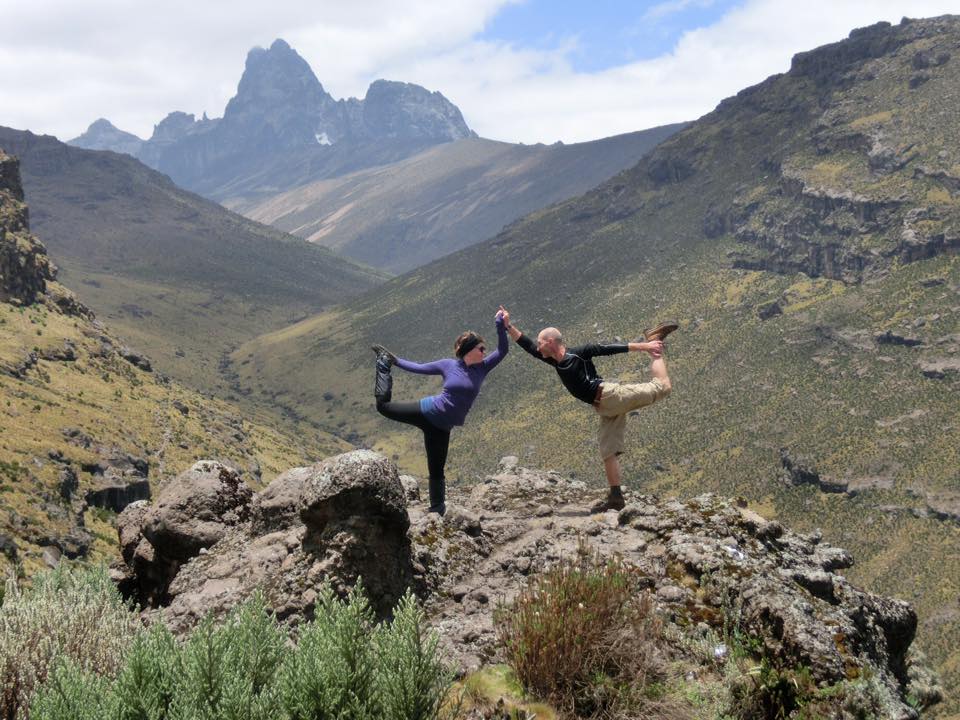
Yuri and Lisa on the descent from Mt. Kenya in the Dancer Pose.
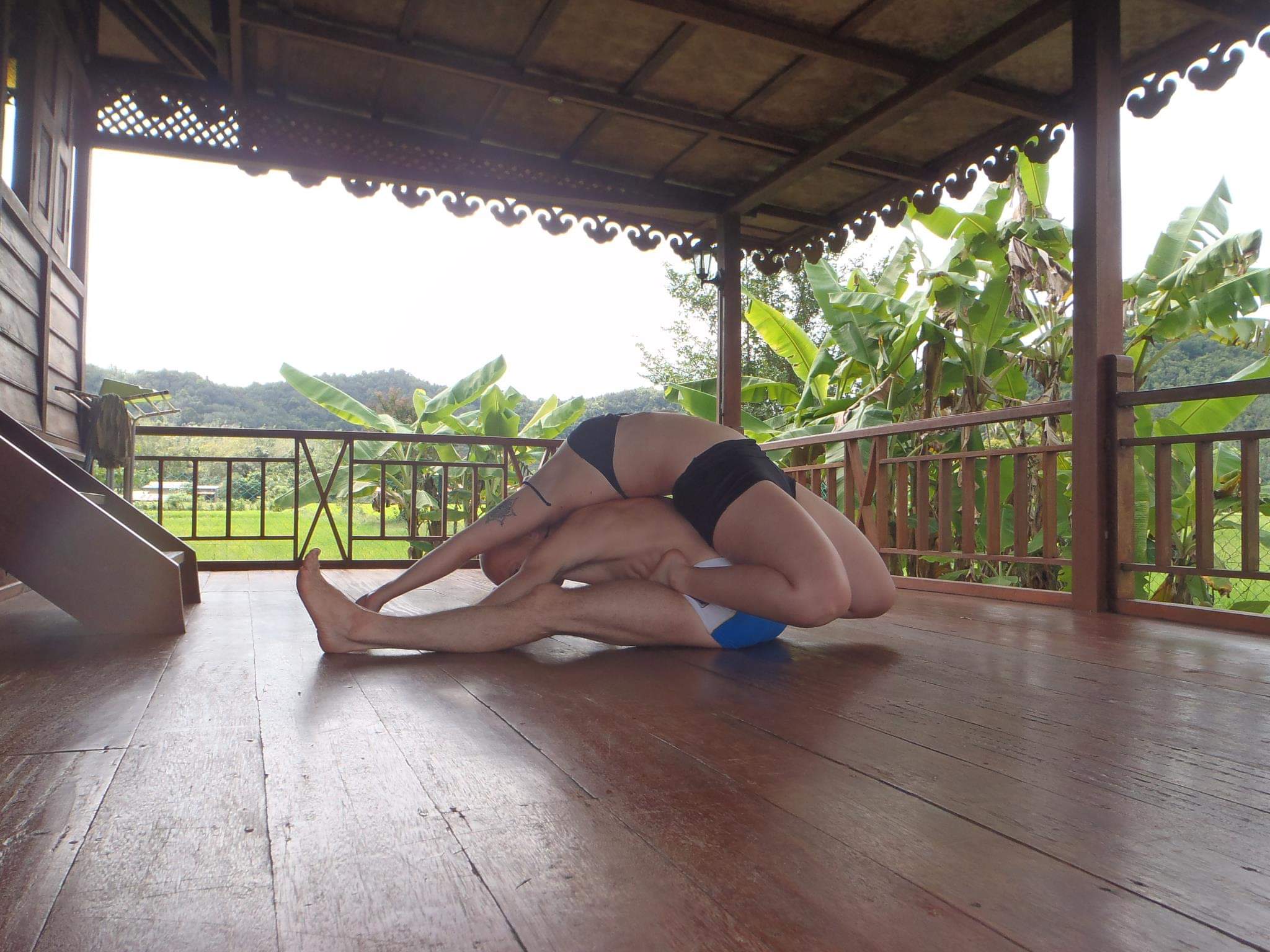
Lisa and Yuri practicing partner yoga in Malaysia.
What is the best thickness for a yoga mat?
A standard mat is around the 7mm mark. These mats are great for an ‘allrounder’ in that they provide some cushioning. If you have tricky knees, these mats can be doubled over to achieve greater softness. I have found that some of my clients who have been elderly or have had some particular physical challenges such as scoliosis, have found the thicker ‘therapy’ mats to be more suitable for a floor practice which are around 1.5cm thick. These however aren’t as durable and lack grip in standing postures. My preference these days is my Manduka eKO Superlite Travel Yoga Mat which is 1.5mm. It serves me well as it packs down to nothing and is super grippy. For sure though when I have an old mat kicking around I will often use the travel mat as a topper. Using travel mats is more about being able to practice on a clean surface, it is not a comfortable ride. Something else to consider is the climate. When I had my travel mat in use during a Canadian Winter, it made doing a floor practice quite uncomfortable. Definitely, a thicker mat would have been preferable in this circumstance. When you are lying down, you don’t want your body to get cold.
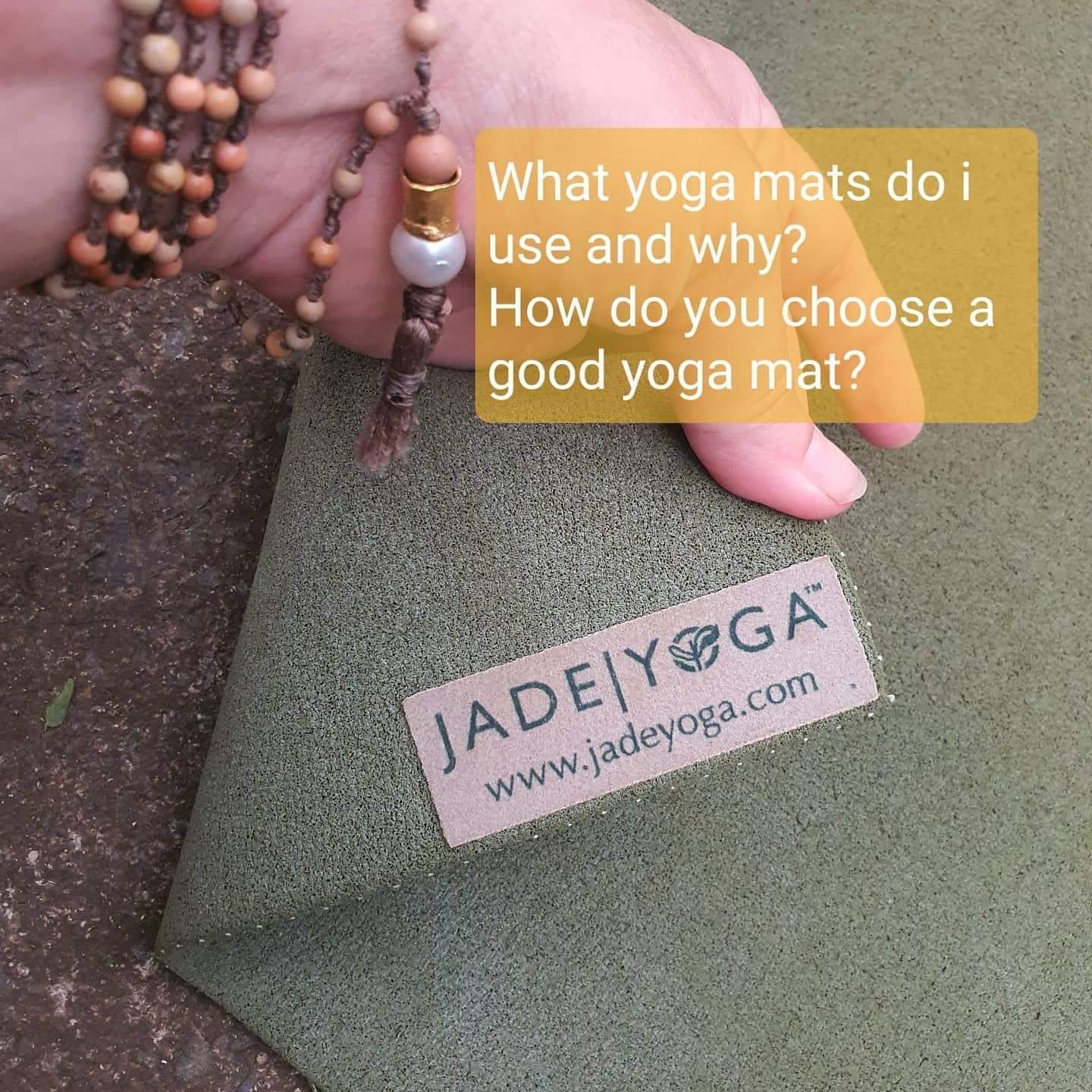
My Jade Yoga Mat is still in use after 10 years of daily practice. Still grippy, a bit ugly these days but it still does the job.
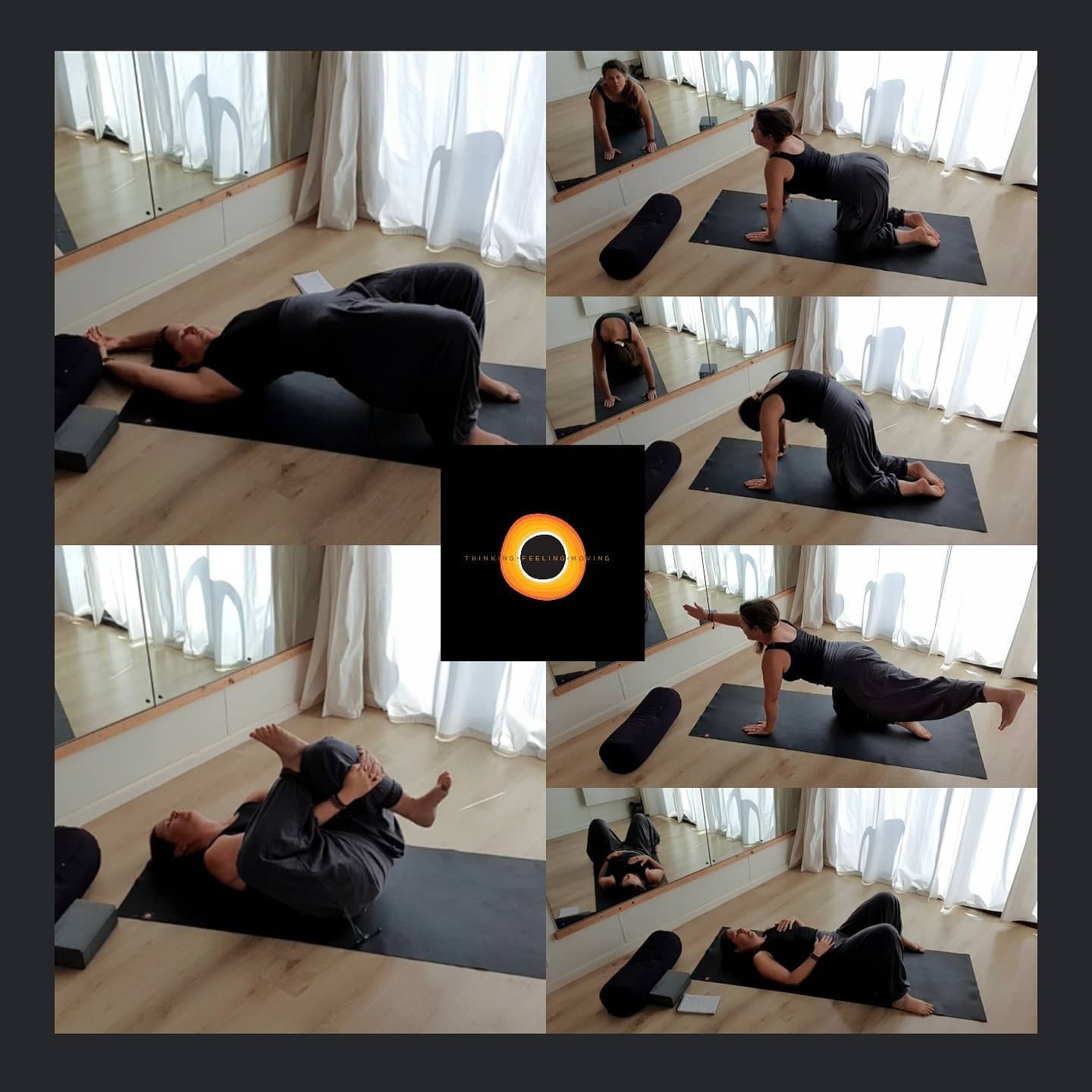
My Manduka travel mat in action.
It is worth noting that the size of mat can also very not only in it’s depth, but you can also order extra-long mats if you are quite tall, extra wide or even circular mats.
Is there a difference between a yoga mat and an exercise mat?
Yes there is. Exercise mats are generally softer yet are less grippy. However of course you could use yoga mats and exercise mats interchangeably. If someone attended my class with an exercise mat it would be completely fine. I just wouldn’t recommend using towels on hard floors as they can easily slip which could lead to accidents.
What is a good yoga mat?
As mentioned earlier, I recommend the Jade Yoga Mat and the Manduka Travel Mat. I think that the variables which need to be considered in selection should to suit your budget, level of use, safety, comfort, ability to clean, grip, environment, and effect on the skin.
Jade Yoga Mat– It is expensive yet I have one which has been in use for 10 years. For sure these days it’s looking ugly but still does the job well. It is good value for money. It has seen a very high level of use. I think it is safe as it is still super grippy. When I am doing an inversion I don’t want my mat to slide out. It is comfortable at 7 mm, however over time it has compressed to around 5mm. I used to clean it with a high pressure water cleaner then sun dry it. These days the mat is used underneath my travel mat for padding, so it is quite dirty. It gets cleaned with soapy water and a sponge these days. Being made of rubber over time it will breakdown which is great for the environment. Also being rubber it was a good choice when I used these mats for teaching purposes in case clients had latex allergies.
Manduka Travel Mat– I travel a lot. To be able to pull out my mat and practice on any questionable surface from hotel room floors to car parks has been great. It takes up hardly any space. I can see how it would be great for people who travel for work, take it away on holidays, or perhaps need a light mat to transport to a yoga class on your bike with. Is not designed for comfort, you will feel every bump in the ground. Once used to it though, the bumps in the ground begin to be something that you get used to which I think is a good thing. Clean them with a bit of warm soapy water and a sponge from time to time, they dry quickly.
What is the best material for a yoga mat?
Personally I stay away from the cheap PVC mats as they are bad for the environment, and honestly I don’t really want to put my face continually on chemicals day after day. They are however the easiest to clean with a quick wipe down. Cork mats are grippy and better for your body and the environment, but I have found them to be less durable. Cork trees from what I was told when I was travelling in Morocco (where cork trees are grown), are on the decline which makes me think that the cork mats are not quite so sustainable. I have watched fellow Yoga Teachers who have had Jute mats and have loved them. I think they tend to look a bit ratty on the edges fraying faster. I think that natural rubber mats are the best.
What Yoga mat is better for my body?
The less chemicals needed to make the mat and clean the mat I think are good things to consider. If you need a thicker mat if your body is delicate then get a thicker one. If you are tall, then get a longer mat. What you put between your body and the ground to help you in your practice needs to be considered. I once had a client in my Yoga Therapy practice who was undergoing chemotherapy and she was seeing me for deep rest. We always put down a clean sheet on top of the yoga mat so her fragile immune system was not compromised as a precaution. I am saying this as it is sometimes worth considering solutions outside of the box for your unique needs.
What Yoga mat is better for my practice?
As a Hatha Yoga Teacher and Yoga Therapist, I still think that the Jade Yoga Mat is a great allrounder. If you however practice Hot Yoga or Bikram when you will be sweating quite a lot, then a mat which is easier to clean and super grippy would be the most important factors. Lululemon has a good (but heavy) mat for this. If you are more of a Restorative Yoga kind of a person then think deluxe and soft. Grip is not the most important factor here. Actually on this note, when practicing restorative yoga, a big beautiful fluffy sheepskin to practice on has been positively dreamy. You aren’t limited to a ‘yoga mat’.
How to keep yoga mats clean?
This depends on what your mat is made from. For sure there are loads of various sprays you can purchase. Personally I think it is a gimmick and to save your money. The less chemicals you put on your mat which your head will be on, the better. Mild soapy warm water and a sponge is great followed by a bit of natural sunshine. I had many mats to clean regularly when I had a studio. I cleaned them with a high pressure water gun and dried them in the sun. Let me just say, CLEAN YOUR MATS REGULARLY! Often you don’t see what needs to be cleaned off. If you have a PVC mat, you can stick it in the washing machine with a towel and they come up well.
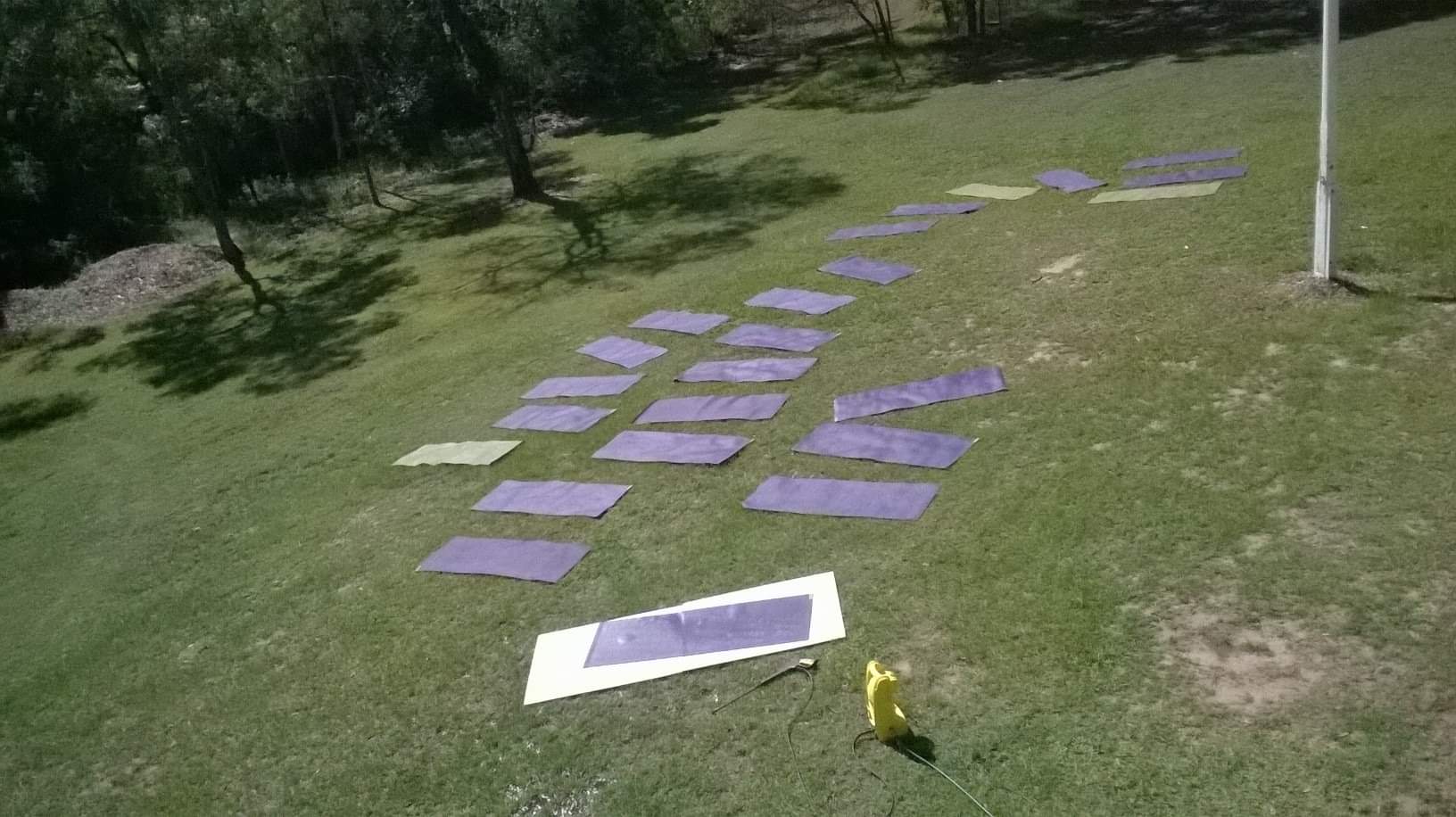
Cleaning the Jade Yoga Mats from when I had a studio with a high water pressure cleaner and dried in the sunshine.
Bonus: Use Lisa’s tool in deciding on a decent yoga mat.
My ultimate tool in test driving a yoga mat is to roll it out on to the ground, check that it doesn’t spring back up so the end is no longer in contact with the floor. Walk up and down the mat and feel it with your feet. Do you like how it feels? Can you stand with on one foot on the mat or is it so soft it makes it difficult to do this? Come down onto your hands and knees. How do your knees feel on the mat? Now do a downward dog. Really press your hands and feet into the mat. If your hands or feet begin to slowly slip away, it isn’t any good. You need to be able to hold your position. Finally lay down. How does the mat smell? Is it chemically?
I hope this has helped you in your decision making for finding the right mat for you. Please feel free to drop me a line and give me some feedback on what your thought about this blog, or give me your own personal reviews on mats that you have enjoyed.
Namaste,
Lisa

Lisa McGarva -Clinical Sexologist, Relationship Therapist, Counsellor, Yoga Teacher, Yoga Therapist and Educator. Lisa is the founder of Thinking Feeling Moving, an online global Private Practice where clients can access better health in their mind, body, and in their relationships. Online sessions available globally, you may make a booking through the website https://www.thinkingfeelingmoving.com
Clinical Sexology + Relationship Therapy + Counselling. Thinking Feeling Moving is a LGBTQIA+ friendly safe space, GSRD aware and sex positive. Lisa is pluralistic in her approach drawing on many theories and techniques to best suit the client’s needs.
Yoga Therapy sessions. Are programmes which are individually designed for clients. After a consultation, Lisa creates a specialised filmed yoga class just for you. This class can be downloaded to your device. The programme is updated as your body heals and comes back into balance. Yoga Therapy is an intensive individualised programme to bring your body back into balance in recovering from illness, injury, surgery or if you are requiring a practice and have high needs with your body. Lisa is a 500hour trained Yoga Teacher (Yoga Australia), and Certified Yoga Therapist (International Association of Yoga Therapists). Private Yoga Classes are also available online.
Reconnection Retreat. Awaken and expand your sexuality and intimacy possibilities.
A tailored package designed just for you, offering a holistic approach of Clinical Sexology, Relationship Therapy and Yoga Therapy. Elevate your sex life and enrich your relationship/s. This package is for clients who wish to attend Therapy in a concentrated amount of time. Immerse yourself in healing and pleasure, combining it with your time off. A chance to really get away and attend to what is important to your life. Lisa can meet you globally as your personal Therapist at a negotiated destination.
Lisa’s YouTube channel is a space for deep rest where you can find dozens of guided Yoga Nidra Meditations filmed in beautiful places around the world. Access deep rest for your body and mind anytime on your device. Lisa also hosts many interviews with prominent leaders in the areas of Sexology, and Yoga Therapy.
She is global calling a few different continents home which is why she works primarily online. She loves travelling with her Husband who is a fellow explorer in travels, experiences and love.

